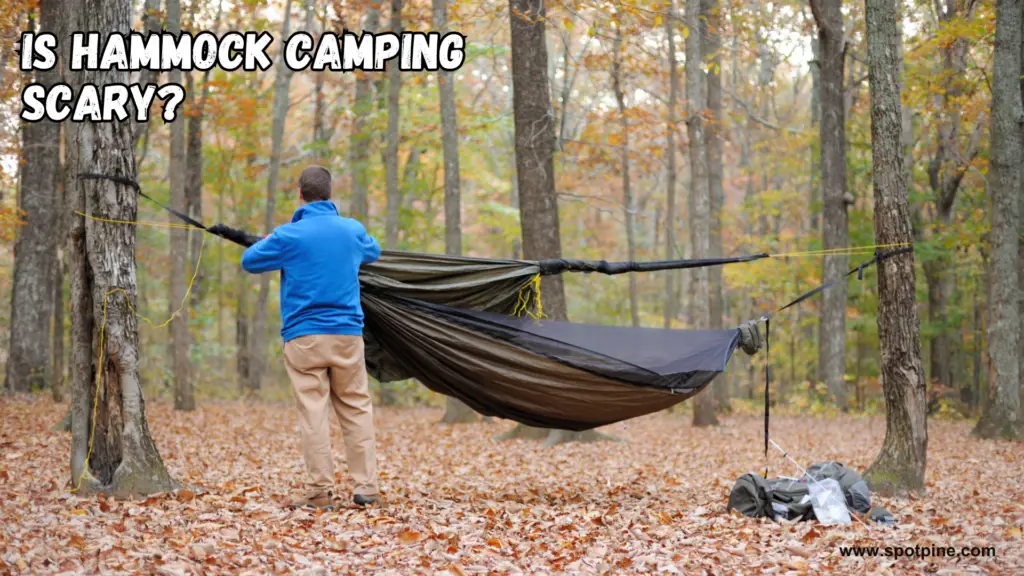Hammock camping is a lightweight, comfortable, and space-saving alternative to traditional tent camping. It offers a unique connection to nature by elevating you above the ground. But what happens when there are no trees to hang your hammock? Fortunately, hammock camping without trees is not only possible, but also rewarding with the right gear and knowledge.
In this comprehensive guide, we’ll explore creative solutions for setting up a hammock without trees, safety considerations, gear recommendations, and advanced tips to enhance your camping experience.
Why Hammock Camping?
Hammock camping has surged in popularity in recent years due to its lightweight nature and the comfort it offers in comparison to traditional tents. By elevating you above the ground, a hammock can help you avoid uneven terrain, insects, and damp ground. But in tree-sparse areas like beaches, deserts, or meadows, hammock camping requires innovative solutions.
Here’s how to adapt and enjoy hammock camping in tree-less environments.
Credit: www.amazon.com
1. Using Poles, Posts, or Round Supports
If you’re camping in a place without trees, poles, posts, or any vertical structure can be excellent substitutes. These include:
- Telephone poles
- Light poles
- Fence posts
- Gazebo or pavilion supports
The key here is stability. Make sure the pole, post, or support can handle your weight, including any gear you’re carrying. You can give the structure a good shake before tying your hammock to it. If the structure seems weak or unstable, it’s better to find a sturdier alternative or combine it with additional support, such as stakes and tension lines.
Pro Tip: When using a telephone or light pole, avoid damaging public or private property. Use protective padding, such as a towel or strap, to avoid scratching or marking the surface.
2. Portable Hammock Stands: Your Best Friend
For serious hammock campers, a portable hammock stand is an essential piece of gear. These stands are designed for quick and easy setup, making it possible to hammock camp without any natural supports. You can set up your stand in a matter of minutes, whether you’re at a campsite, beach, or even your backyard.
The market offers various types of hammock stands, from lightweight backpacking options to more robust car camping versions. Some brands offer stands that fold up compactly for easy transport. With a hammock stand, you’re guaranteed comfort no matter where you camp.
Recommended Gear:
- ENO Nomad Hammock Stand – Lightweight and easy to set up, perfect for car camping and backpacking.
- TATO Gear Hammock Stand – Ideal for backpackers looking for a compact, ultra-light solution.
3. Ground Conversion Kits: Turning Your Hammock Into a Tent
A ground conversion kit allows you to convert your hammock into a tent-like shelter when trees or other vertical supports are not available. This involves using trekking poles, hiking sticks, or even improvised materials like strong branches to create a tent structure.
How it works: Set your poles at both ends of the hammock to prop it up. Tie the ropes tightly to the poles, ensuring the structure is taut. Lay a tarp or groundsheet beneath the hammock to protect against moisture and dirt. You can also use a rainfly or bug net to enhance comfort.
This solution is great for areas like open plains or deserts where no upright structures exist. Ground conversion kits offer a versatile option for adventurous campers who may encounter diverse terrains.
4. Use Your Vehicle for Hammock Camping
If you’re car camping, your vehicle can be a reliable support for one end of the hammock. Simply tie one side of your hammock to your car’s roof rack or a sturdy hook, and the other side to a nearby post or portable stand. Make sure your vehicle is parked on level ground to avoid tilting your hammock.
Things to consider:
- Ensure the attachment point on the car is strong enough to support your weight.
- Do not hang your hammock from parts of the car that may move or bend under pressure, like a side mirror.
Pro Tip: When camping in open areas, always park your car in a stable, flat position to avoid shifting your hammock setup.
5. DIY Hammock Supports: Build Your Own Setup
For long-term campers or those revisiting the same camping site, building your own hammock supports can be a rewarding and reliable solution. This method involves:
- Digging two deep holes, about 2-3 feet deep depending on the soil type.
- Inserting wooden or metal posts into the holes.
- Securing the posts with concrete for stability. Alternatively, you can use large rocks and soil for a temporary setup.
You can also use tension lines to keep the posts from wobbling, and they can double as clotheslines to dry your gear.
Pro Tip: Use wooden posts with a diameter of at least 6 inches to ensure they’re sturdy enough to support your weight.
6. Safety Tips for Hammock Camping Without Trees
As with any form of outdoor camping, safety is key to ensuring an enjoyable experience. Hammock camping without trees poses unique challenges, but by following these tips, you can keep your setup secure and risk-free.
Weather Considerations: When camping without trees, you may have less natural protection from the elements. Bring a tarp or rainfly, and set up your hammock away from areas prone to flooding.
Check Weight Capacity: Before hanging your hammock, always confirm that the support can handle your weight. This applies to hammock stands, poles, and any improvised supports.
Proper Knots: Learn reliable knots like the bowline, taut-line hitch, or figure-eight knot. These knots will secure your hammock safely and prevent sagging.
Test Your Setup: Always test the stability of your setup before climbing in. Sit gently in the hammock to confirm that it will hold your weight securely.
Credit: dutchwaregear.com
7. Converting Your Hammock Into a Ground Shelter
In situations where hanging a hammock isn’t possible, you can convert your hammock into a ground shelter. To do this, follow these steps:
- Find two sturdy supports, like hiking poles or sticks.
- Prop up both ends of your hammock using the supports and secure them with guylines.
- Lay a groundsheet underneath your hammock to create a waterproof barrier.
- Use a tarp to create a rainproof cover, or a bug net to keep insects away.
This method is particularly useful when camping in areas with unpredictable weather, as it provides a sheltered, above-ground sleeping option.
8. Gear Recommendations for Hammock Camping Without Trees
Here’s a list of additional gear that will help you stay comfortable and secure while hammock camping without trees:
- Tarp and Rainfly: These will keep you dry and protected from wind or rain.
- Guyline and Stakes: Essential for keeping your setup stable and secure.
- Insulated Sleeping Pad: Provides comfort and warmth in colder conditions.
- Mosquito Net: Crucial for areas with high bug populations.
Here is the Review of SZHLUX Double Hammock with Stand
Hammock camping without trees opens up a world of possibilities. Whether you’re camping on a beach, desert, or in a wide-open field, there are countless solutions to help you enjoy the comfort and freedom of hammock camping. By using poles, portable hammock stands, ground conversion kits, or even your own vehicle, you can set up a secure and comfortable hammock anywhere.
With the right equipment, safety measures, and a little creativity, you can hammock camp in places you never thought possible. So don’t let the lack of trees limit your adventures—explore new camping possibilities with these innovative solutions and enjoy the great outdoors like never before!



Pingback: How To Tie a Hammock? Quick & Secure Techniques Unveiled